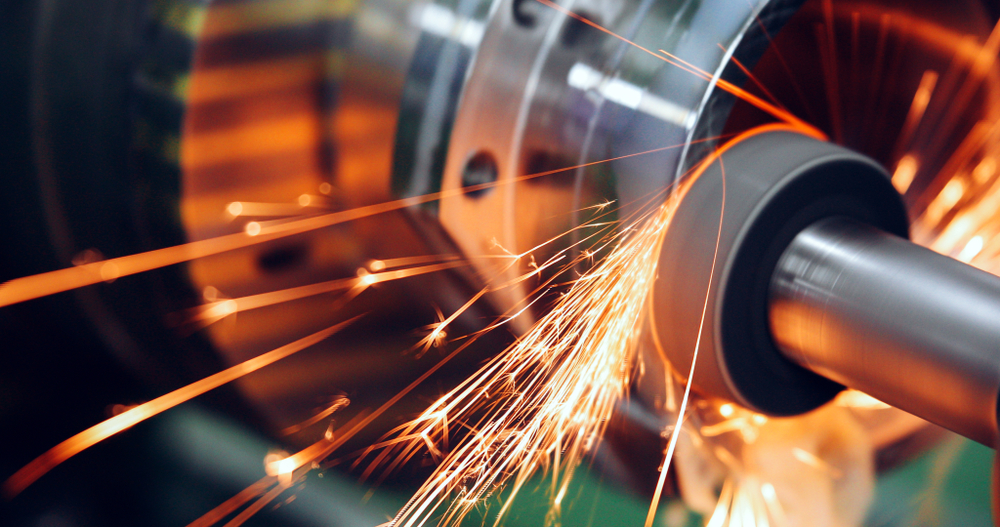CNC machining and turning processes are highly common in many manufacturing sectors, including the automotive, electrical, and aerospace industries. While fabricating products for these industries, machinists use a type of CNC machining, like CNC turning or CNC milling, to create highly precise parts and components that end up in vehicles, circuit boards, aircraft, and more.
Read on to learn more about CNC turning machines and their operations.
What Is CNC Turning?
CNC stands for computer numerical control, which refers to the automation of a machining process. CNC turning is a type of CNC machining where material is spun at a high speed and a cutting tool shaves away material. This is called a subtractive machining process.
CNC lathes are typically used for turning operations in industrial settings.
Types of CNC Turning Operations
There are different types of turning machines and CNC lathes, and some have unique cutting features, making them ideal for specific applications.
Here are the different types of CNC turning processes.
- Straight Turning
This type of turning uses a cutting tool to cause a uniform reduction in the diameter of a workpiece and is intended to machine material into a specified thickness. It quickly removes material to prevent variation in the product diameter. Straight turning is also called rough turning because it requires extra finishing to obtain dimensional accuracy. - Knurling
Knurling involves introducing cut patterns of serrated, angled, or crossed lines onto the surface of a workpiece. It can be used to fabricate bolts and nuts for threaded holes. Knurling may require specially designed tools. - Parting
Parting uses a single-point cutting tool to create a deep gouge into a material and remove its internal components. It creates parts or cuts off a section of the original piece. - Taper Turning
This type of turning gradually reduces a material’s diameter from one end to another. The angular motion between the material and the cutting tool causes the transition and the reduction in the diameter of the workpiece. Like most types of turning, the end product of taper turning has a cylindrical shape. - Threading
Threading involves the movement of a cutting tool along the sides of the material, cutting threads into the external components of the workpiece. Threads are helical grooves with specific lengths and pitch. - Grooving
Grooving creates a narrow cut or groove in a workpiece. This process involves the movement of a pointed tool head against the material, which cuts with equal width as the cutting tool. Machining grooves of wider diameters is possible with multiple cutting tools.

Types of CNC Turning Operations
Types of CNC Turning Machines
CNC lathes are the most common machine used for turning operations, but there are four main types of CNC turning machines. Two are lathes and two are turning centers, which are a more advanced form of CNC lathes. Lathes are usually only two-axis machines and have just one spindle while turning centers can have up to five axes and are much more versatile in terms of cutting ability.
- Horizontal CNC Lathes
Horizontal CNC lathes are one of the most popular machines for various industrial applications. They can be used for both turning and boring operations. - Vertical CNC Lathes
Vertical CNC lathes are more suitable for materials that are heavy or short or areas with space limitations. They position the material vertically from the bottom before spinning or cutting occurs. - Horizontal Turning Centers
Horizontal turning centers are enclosed devices with drilling and milling functionalities. They have horizontal orientations with tools anointed above as they rotate and cut into the workpiece, depending on gravity to remove the cuts. - Vertical Turning Centers
Vertical turning centers act as a combination of horizontal turning centers and CNC millers. Their design puts the rotating chuck close to the ground, making it easier to work with large workpieces.
Ready to jumpstart your career as a CNC Machinist Technician?
Explore our program today and take the first step towards a rewarding future in manufacturing! Apply now and start shaping your success.
Components of a Lathe
- CNC control panels are the “brain” of the machine where the CNC program is stored. Machinists control the entire lathe from the keys on this panel, including starting and stopping a project, moving the axis, and entering new programs.
- Headstocks function as the holding device for the other components of the lathe, including the gear chain, spindle, and driving pulley.
- Tailstocks, though not always used, are a non-rotating center mount used for boring and located opposite the headstock.
- Spindles are the rotating axis of the machine with a shaft at its heart. Both the headstock and tailstock can have a spindle.
- Chucks hold the component that is being machined. They can have a different number of jaws for holding the workpiece.
- Beds are the base of the machine and are used for the sliding action. They can sometimes be extended for larger workpieces or function as a conveyor belt.
- Cutting tools are small bits that remove material in different ways depending on the size and shape of the tool.
- Tool turrets are the tool carrier for the machine. The shape and size of the turret are determined by the number of tools that will be mounted on them.
- Carriages hold the cutting tool parallel to the workpiece for turning or perpendicularly for facing.
- Foot pedals are used to open or close the chuck on the tailstock.
What Is the Process of Turning?
During CNC turning, a material is secured to a spindle within a turning machine and a cutting tool moves in a linear fashion to act upon the material, removing undesired material until the finished component is all that is left. Usually, the machined material is cylindrical or round.
CNC lathes for turning centers have different tools in the turret, all controlled by computer programs and codes.
CNC Lathes vs. CNC Turning Centers
CNC lathes and turning centers look similar and perform the same tasks but have some differences. Lathes are some of the earliest tools used for CNC machining, and turning centers are upgraded versions. Turning centers incorporate automated tool changing, efficient chip removal, live rotating tools, and simple completion of several components.
One major difference is that turning centers are often housed with full machine enclosures, protecting the machinist from chips and coolants used in the cutting process.
Turning centers remove material at extremely high rates and can perform milling, tapping, and drilling, giving them higher efficiency and better production capabilities than CNC lathes.
Ready to master the art of CNC machining?
Take charge of your future with our comprehensive training program for CNC Machinist Technicians. Secure your spot today!
What Is the Difference Between Turning & Milling?
While CNC turning rotates the part for cutting, CNC milling rotates the tool to cut the part.
CNC turning is typically used for cylindrical parts since you rely on the part to rotate and create friction to remove material when the cutting tool is placed against it.
CNC milling can create more complex parts because the cutting tool, rather than the material, is spinning. They have a complex setup with multiple axes and rotating tools, enabling cutting operations from various angles.
Become a Certified CNC / Machinist Technician in Erie
If you’re interested in using CNC machines to produce highly accurate parts that will end up in cars, planes, medical facilities, and more, consider enrolling in Erie Institute of Technology’s CNC / Machinist Technician Training Program.
Upon completion of this 9-month program, you’ll be able to control the three axes of lathes and mills using computer numerical control.
Take your place in the industry of tomorrow. Apply online today or learn more about our manufacturing programs.
About Author:

Ross Aresco
CFO
Ross Aresco is the CFO of Erie Institute of Technology. Erie Institute of Technology (EIT) is an Erie Pennsylvania technical/trade school providing training programs for medical, computer, electronics, manufacturing, and technology careers. EIT offers programs in many different areas to suit your interests and talents.
